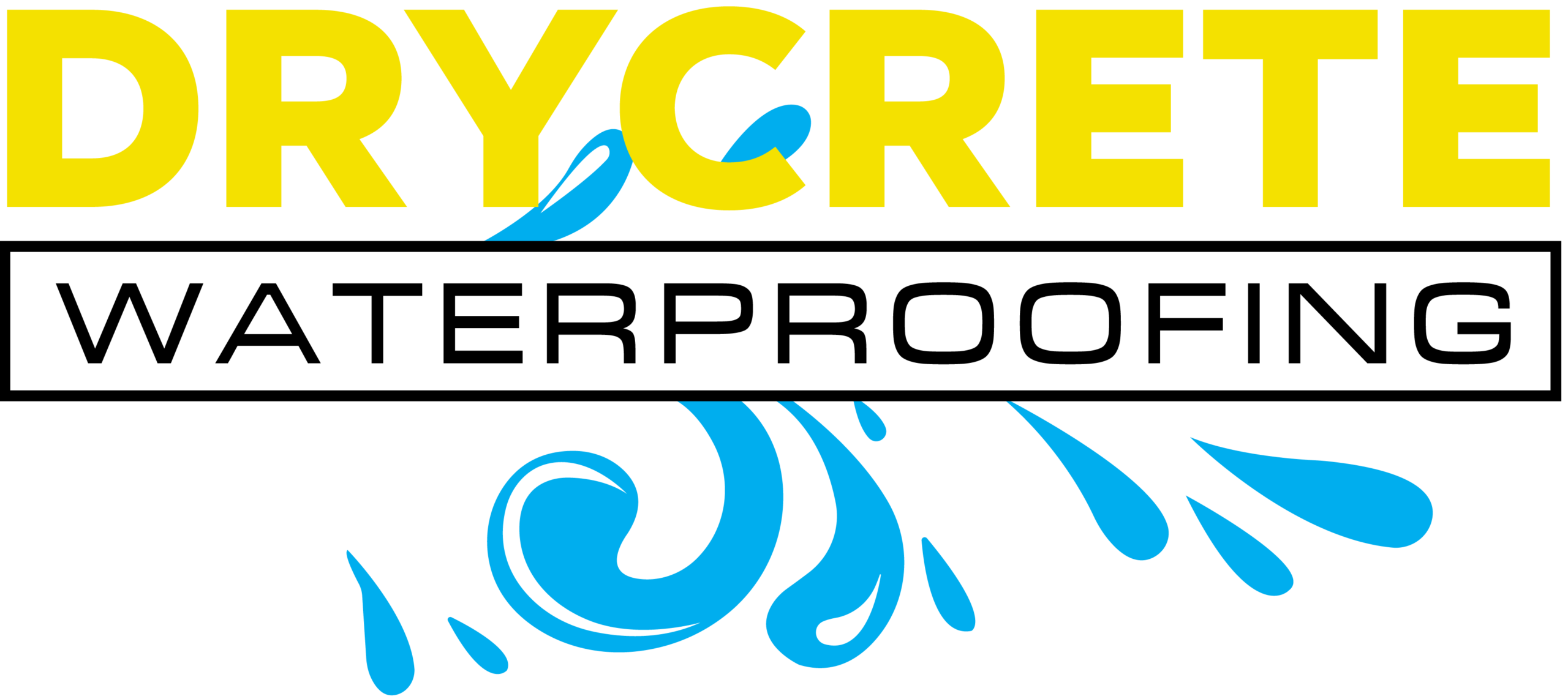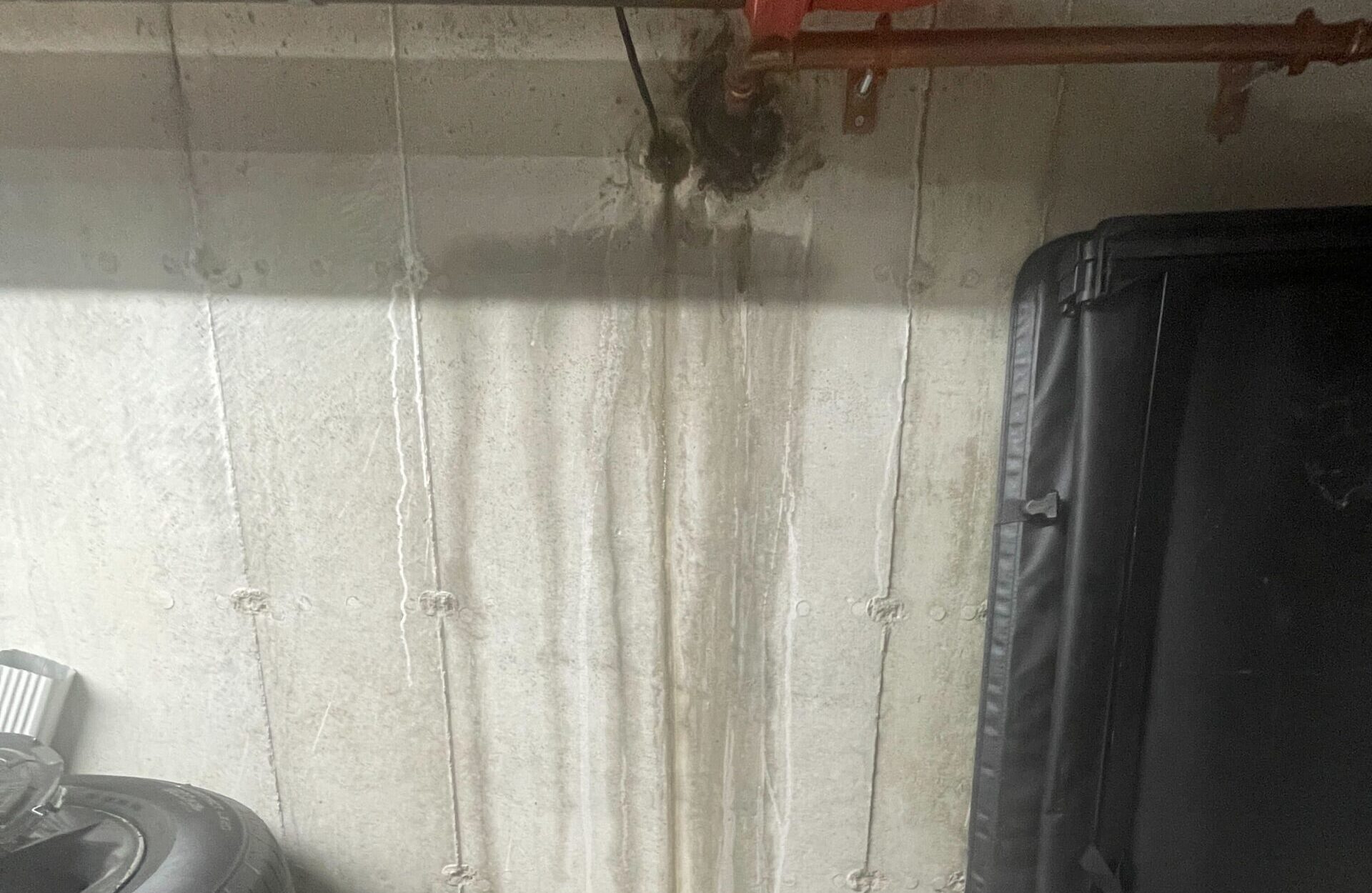A leaking basement wall is a problem that no one wants to face. Puddles and damp patches are certainly an annoyance that no homeowner wants to deal with. That being said, it’s the add on effects of water intrusion that are really scary.
From mold ruining your stored possessions to serious structural damage threatening your home, a leak should never be ignored. But how do you go about fixing a leaking basement wall before more damage is done?
Identify The Source of The Leak
The first step towards tacking a leaking basement wall is to work out where the water is getting in. This could be from outside, through the wall itself, or it could be caused by leaking plumbing hidden behind drywall. It goes without saying that these will require different solutions.
Leakage vs Seepage
Not all sources of water intrusion are immediately obvious. In the case of seepage, there may be no visible source, but the damage will be evident. A leak on the other hand will probably be more easily pinned down.
As a rule of thumb, if there’s a specific hole, either in the wall or the pipe, it’s a leak. If water is working its way through an apparently sound surface, it’s wicking. Leaks will be more likely to cause puddles.
In the case of a leak you should be able to trace the source back to a crack or leaking pipe or fitting. Seepage is more likely to be caused by groundwater or rain being forced through microscopic tunnels in the concrete of your wall by hydrostatic pressure.
Leaking Basement Walls: Signs To Look Out For
While puddles are most likely caused by a leak, there are certain signs that could be evidence of either. If you notice any of these, it’s time to investigate and organize a foundation leak repair:
- Dampness
- Wet Spots on walls
- Musty Smells
- Mold Growth
- Peeling paints and paper
These symptoms are all caused by water getting where it shouldn’t. Left unattended, they’ll almost certainly get worse, so it’s always a good idea to organize a basement leak repair at the first sign. Moving quickly will save you time, effort and money.
Common Entry Points
If you find puddles or any of the other signs of a leaking basement wall, there are a few likely culprits to check first.
- Cracks: The general rule of thumb is that you can safely ignore a crack that’s less than 1/8th” wide and dry. Anything else needs investigating.
- Cove Joints: Where your walls meet your floor is often a bit of a weak point. Work your way along looking for signs of ingress.
- Basement Windows: Windows are effectively holes in the wall, so any damaged seals or rotten frames are a likely entry point.
- Gaps around pipes and conduits: Again, any hole in the wall is a likely source of your water ingress. Many can be filled up to create a seal.
How To Fix A Leaking Basement Wall
Every basement is different, so there really is no one-size-fits-all answer to the question “how do I fix my leaking cellar walls?”. It’s more than likely that you’ll need a combination of a few different techniques to ensure a nice dry basement. Some of these include things like:
Interior Work
Many forms of foundation leak repair can be done relatively quickly and be contained within the walls of your home. These offer practical solutions to leaking basement walls and floors without the disruption caused by extensive groundwork.
Crack Sealing
It should come as no surprise that cracks are a major source of water ingress. While not all of them are a cause for concern, it’s worth keeping on top of them and filling the ones that seem to be growing or leaking.
How It Helps
Sealing cracks using either epoxy or polyurethane injections physically blocks water from entering through them.
When to Use
Crack sealing is great for dealing with smaller cracks and visible leaks. Some can be handled on a DIY basis, though larger or more complex jobs are best left to the pros.
Sump Pumps
A sump pump is a device which sits in a pit (the ‘sump’) in your basement floor. They’re designed to ensure that rising groundwater is pumped harmlessly away before it can threaten your slab or walls.
How It Helps
When it rains, the water is absorbed by the ground around your home. If it rains particularly heavy or long, this can threaten your foundation. Sump pumps move this water away before it gets to that level, keeping your basement dry.
When To Use
Sump pumps are best employed when you’re dealing with a build-up of groundwater from below or a basement which floods regularly. They partner really well with interior French drains.
Interior Drainage Systems
Interior drainage systems consist of a perforated drain pipe that traps and redirects water away from problem areas. They’re most commonly called French drains, but they also go by names like drain tiles, weeping tiles and others.
How It Helps
A French drain is almost like a gutter for under your floor. The perforations allow water to enter and trap it inside. It can then only flow in the direction you want it to: either towards a drain or your sump pump.
When To Use
It’s worth considering installing a French drain if you’re facing recurring problems with water seepage or high groundwater levels.
Crystalline Waterproofing
Not all waterproofing solutions require a lot of disruption. In the case of crystalline solutions, all you need to do is paint them on.
How It Helps
Crystalline waterproofing is painted on to the surface of your leaking basement walls. The chemicals react with water and the concrete to form tiny crystals which block up the microscopic pores and tunnels which allow water to seep through.
When To Use
If you’re looking for a long-term solution to seeping basement walls, crystalline waterproofing is probably the answer. As it’s activated by exposure to water, it actually gets more effective as time goes on.
Exterior Work
While interior solutions can be very effective, sometimes a leaking basement wall requires more drastic measures. Working outside the walls of your home will always create some disruption but when it comes to foundation leak repairs, it’s hard to beat.
Excavation And Waterproof Membranes
Though disruptive, sometimes ‘wrapping’ your home in waterproof membranes is the most effective way to keep the water out.
How It Helps
A trench is dug around the exterior perimeter of your home and the walls of your basement are then covered in either a membrane or coating. This physically blocks water from ever threatening your foundation walls.
When To Use
Installing waterproof membranes is often recommended for severe leaks or homes in areas with particularly heavy rainfall or bad drainage.
Proper Grading and Landscaping
The condition of the ground around your home plays almost as big a role in waterproofing your basement as the walls themselves.
How It Helps
Grading ensures that there is a slope leading away from the walls of your home. As water always flows downhill, this means that it doesn’t get the chance to pool against your walls, avoiding a leaky foundation.
You can also boost your waterproofing work significantly by being careful with your gardening. Certain plants, soil additives and things like rain gardens can work wonders.
When To Use
While re-grading a home is a big undertaking, it can pay dividends when dealing with bad drainage or when water is pooling beside your walls.
Exterior Drainage Systems
These go by many names like French Drains and weeping tiles but they all serve the same purpose: directing water away from problem areas.
How It Helps
Exterior drains work in much the same way that the interior versions do. They collect water from problem areas and conduct it harmlessly away before it gets a chance to do any damage.
When To Use
Exterior French drains are ideal in areas where water regularly pools in the same place during heavy rain.
Preventative Measures To Avoid Future Leaks
As ever, prevention is better than a cure. There are some simple things you can be doing to avoid leaks forming in the first place.
- Maintain your gutters and downspouts. Keep your gutters clean and clear and make sure downspouts are properly aligned to direct water away from the foundation.
- Proper Landscaping. Consider where you plant things around your home. Native shrubs are great at absorbing rain water and the birds and bees will thank you too.
- Waterproof your windows. Window well covers and ensuring that sealants are sound can work wonders.
- Regular inspections. No matter the cause of your waterproofing woes, they’re easier to deal with if caught early. Not only will you avoid a problem getting worse and causing more damage, you’ll likely save a lot of money too.

